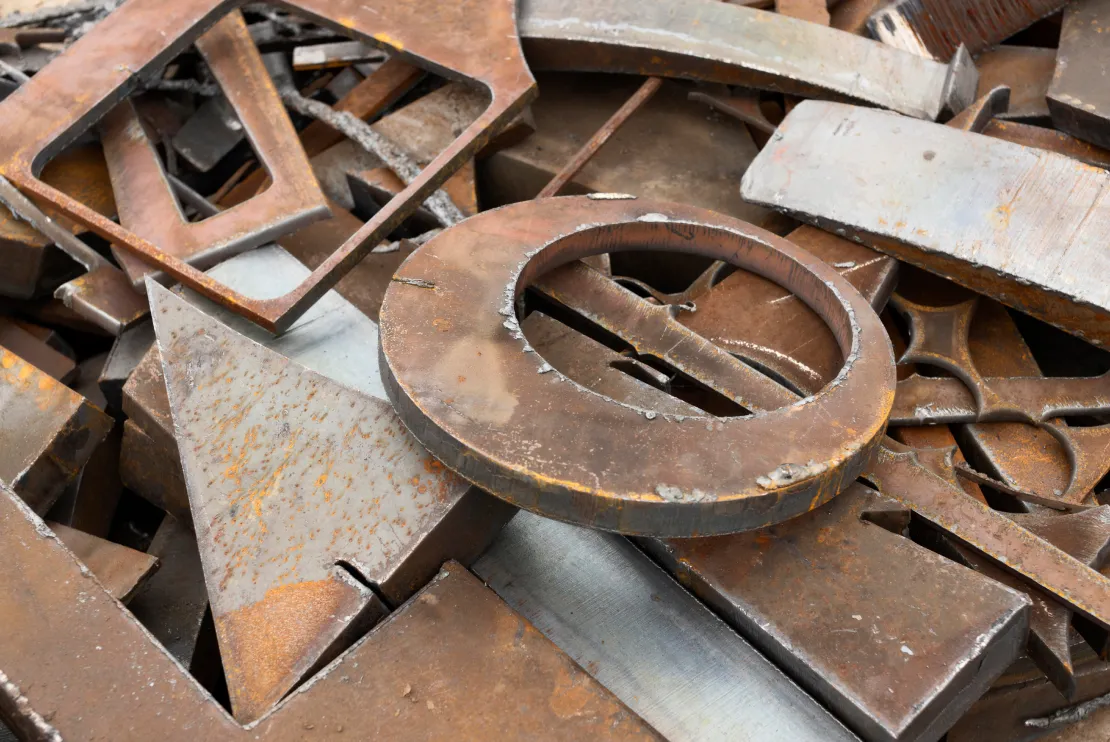Introduction
The cast iron
recycling industry is rapidly evolving, bringing eco-friendly
metal casting to the forefront of sustainable manufacturing. With the
growing need to reduce environmental impact and industrial waste, businesses
are adopting innovative cast iron recycling methods to enhance efficiency
and sustainability.
This blog explores the cast iron recycling process, the latest advancements,
and the future of cast iron recycling in manufacturing. We’ll also discuss
the economic and environmental benefits, along with best practices for
sustainable metal casting.
What is Cast Iron Recycling?
Cast iron recycling refers to the process of reclaiming scrap iron and
repurposing it into new products. This significantly reduces the need for
raw material extraction, lowers energy consumption, and minimizes industrial
waste.
How Cast Iron Recycling Reduces Environmental Impact
1. Reduces Carbon Footprint
Recycling cast iron requires up to 60% less energy compared to producing
new iron from mined ore.
2. Minimizes Industrial Waste
Reduces landfill accumulation by reusing metal scraps.
3. Preserves Natural Resources
Less mining means lower soil and water pollution.
4. Lowers Manufacturing Costs
Foundries benefit from recycled iron, as it is cheaper than raw
materials.
Cast Iron Recycling Value per Pound
Many industries and scrap dealers measure the profitability of cast iron
recycling per pound. The value fluctuates based on market demand, purity,
and processing costs. However, businesses benefit from a consistent supply
of recycled materials at a lower cost compared to newly mined iron.
How Cast Iron is Recycled?
The cast iron recycling process involves several steps:
1. Collection & Sorting
Scrap iron is collected from industries, old infrastructure, and
households.
2. Cleaning & Pre-Processing
Removal of contaminants like rust, coatings, and non-metallic materials.
3. Melting & Refining
Scrap is melted in a furnace and purified to remove impurities.
4. Casting & Molding
The molten iron is cast into new products or components.
Cast Iron Recycling Methods
1. Induction Furnace Recycling
Energy-efficient method reducing emissions and energy use.
2. Traditional Cupola Furnace Melting
High-temperature melting technique for large-scale recycling.
3. Closed-Loop Recycling Systems
A sustainable approach where foundries reuse their own metal waste to
create new products, reducing material loss.
Innovations in Cast Iron Recycling
The industry is witnessing groundbreaking advancements that make scrap iron
recycling more effective:
1. AI & Robotics in Sorting
Reduces contamination and increases the quality of recycled iron.
2. Low-Carbon Iron Production Techniques
Foundries now use solar and wind-powered furnaces to reduce emissions.
3. Eco-Friendly Alloying Materials
Enhancing recycled iron properties to match new iron strength.
4. Hybrid Melting Technologies
Combining electric arc furnaces with renewable energy sources.
These innovations are setting the stage for the future of cast iron
recycling in manufacturing, making the industry more sustainable,
cost-effective, and environmentally responsible.
Best Practices for Sustainable Metal Casting
To maximize the benefits of cast iron recycling, manufacturers should adopt
these best practices:
1. Invest in Advanced Sorting Technologies
Reducing impurities in scrap iron recycling enhances product quality.
2. Utilize Low-Emission Furnaces
Shifting to induction and hybrid furnaces lowers energy consumption.
3. Promote Circular Economy Models
Implementing closed-loop systems ensures that manufacturing waste is
reused efficiently.
4. Follow Environmental Regulations
Adhering to government policies supporting sustainable manufacturing can
lead to tax benefits and cost savings.
Challenges & Solutions in Cast Iron Recycling
Despite its advantages, cast iron recycling faces challenges:
1. Scrap Contamination
Impurities can degrade the quality of recycled iron.
Solution:Advanced filtration techniques and AI-driven sorting
improve
purity.
2. High Processing Costs
Some recycling methods require high energy and infrastructure.
Solution:Investing in energy-efficient technologies like
induction furnaces reduces operational costs.
3. Industry Misconceptions
Some manufacturers still believe recycled iron is inferior.
Solution:Modern cast iron recycling methods ensure recycled
materials meet high durability standards.
By addressing these issues, the industry can expand the role of cast iron
recycling in sustainable manufacturing.
Future of Cast Iron Recycling in Manufacturing
The future of cast iron recycling is driven by innovation and sustainability:
1. AI-Driven Recycling Facilities
Fully automated sorting and processing will improve efficiency.
2. Zero-Waste Foundries
Businesses are adopting closed-loop recycling systems to eliminate waste.
3. Government Incentives & Policies
More countries are enforcing strict recycling laws, encouraging
environmental cast iron recycling.
4. New Eco-Alloys
Scientists are developing stronger and more sustainable recycled iron
alloys.
As industries move towards a circular economy, the impact of cast iron
recycling will grow, reducing dependence on virgin materials and
enhancing sustainable metal casting practices.
Conclusion
Cast iron recycling is no longer just an option—it’s a necessity for
sustainable manufacturing. With advancements in eco-friendly metal casting,
AI-based sorting, and low-emission melting techniques, industries can
significantly reduce waste and energy consumption.
By adopting best practices for sustainable metal casting, companies can:
I. Lower production costs
II. Reduce environmental impact
III. Ensure a steady supply of high-quality recycled iron
The future of cast iron recycling in manufacturing is bright, with
continuous innovations making the process more efficient and eco-friendly.
Businesses that invest in sustainable practices today will lead the industry
towards a greener and more profitable future.
